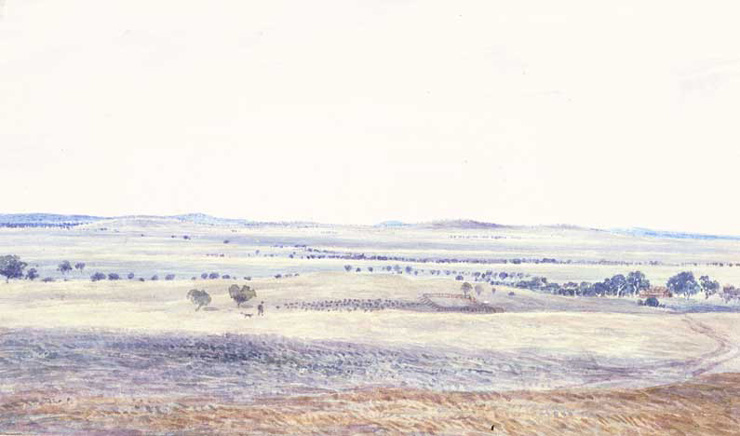 'Panorama of Challicum, No. IX', c1850
'Panorama of Challicum, No. IX', c1850
TLF ID R3263
This is a watercolour measuring 15.7 cm x 24.3 cm showing the vast yellow-and-green Challicum plains. In the distance a flock of sheep, watched by a shepherd and dog, is moving into temporary wooden yards. Among gum trees, to the right of the yard, is the homestead. The artist, Duncan Cooper, included this painting as the seventeenth watercolour in his field sketchbook and inscribed the title 'Panorama of Challicum, No. IX' on its mount. The watercolour is the ninth of the nine panoramas which together form a cyclorama of the Challicum area.
